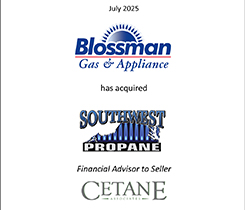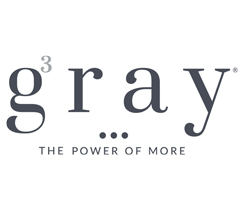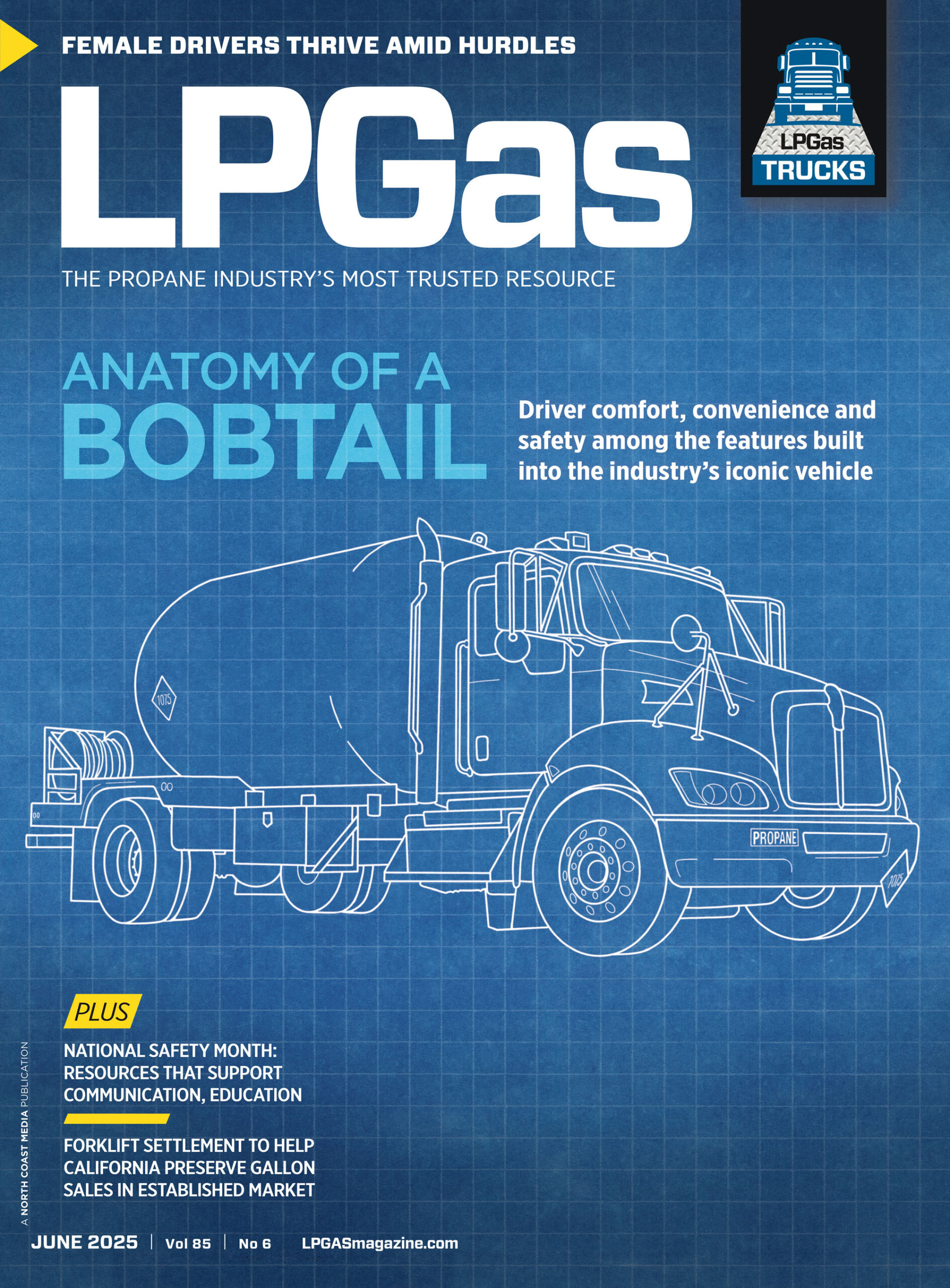Propane industry news roundup: August 2007
Appeals court rejects changes in drivers’ hours of service
WASHINGTON, D.C. – For the second time in three years, a federal appeals court has rejected the Department of Transportation’s attempts to rewrite hours of service rules for commercial truck drivers.
A July 24 ruling by the U.S. Court of Appeals for the District of Columbia allows drivers 10 maximum daily hours behind the wheel compared to 11 the Federal Motor Carrier Safety Administration (FMCSA) sought. The ruling also eliminates a provision in which drivers could restart their work week after 34 consecutive hours of not working. Instead, drivers will be permitted 70 hours of work in any eight-day period.
The FMCSA did not provide adequate reasoning for making the changes in driving time, the court said.
FMCSA tried in 2003 to increase the number of hours truckers can drive before an appeals court rejected that attempt the following year. The current rule was created by the Bush administration in 2005.
PERC to consider changes in market development strategy
WASHINGTON, D.C. – The Propane Education & Research Council called for a review of the industry’s market development strategy during its meeting July 19-20.
The council will analyze the industry’s work in each market segment, looking at new technologies to increase propane usage.
This move comes on the heels of a slowdown in new residential construction, which is expected to curb propane usage in this segment, Mike Sloan of Energy and Environmental Analysis Inc. reported.
Sloan said propane’s share in new residential construction has been strong compared to other fuels, but he added that propane housing starts declined by 14 percent in 2006 after peaking in 2004-05.
Harris Interactive’s Jean Statler and Scott Hawkins reported results of a mid-year Consumer Education Campaign review.
While the campaign continues to increase awareness of propane, the study showed a decrease in consumers’ awareness of key strategic messages compared to electricity.
In other council business:
- The Safety & Training Advisory Committee unveiled two new CETP e-learning DVDs: “Propane Delivery Operations & Cylinder Delivery” and “Bobtail Delivery Operations,” which are available through the Propane Resource Catalog.
- PERC approved a project to develop a 10 RT gas engine driven heat pump for commercial applications. Phase I was given funding approval of $724,826.
- PERC voted to approve 10 new agricultural projects to develop propane-fueled solutions for the farm, including combined heat and power applications. The council also approved $100,000 to promote the Roush Ford F-150 propane-powered pickup truck to the agricultural market.
- PERC voted to approve extending the Marketing Metrics Initiative through the end of 2007 at a cost of $227,660. It includes an updated version of the Propane Database and Forecasting Model, with county-level data.
The council also approved funding for the following grants:
- $350,000 to PERC for a propane-distributed generation demonstration program.
- $150,000 to PERC for the 2008 International Builders Show.
- $145,250 to PERC for the revision of CETP textbooks, “Basic Principles & Practices,” “Propane Delivery Operations and Cylinder Delivery” and “Bobtail Delivery.”
- $77,900 to Railroad Commission of Texas/AFRED for the introduction of 90 percent efficient micro-trigeneration technologies to Texas dairy farming.
- $70,000 to the University of Nebraska-Lincoln for the design and optimization of propane-fueled weed-crop flamer.
- $55,000 to PERC for an LPG genset with solar hybrid power station for the 2007 World LP Gas Forum.
- $52,500 to PERC for CETP support.
- $41,600 to Autumn Wind Associates Inc. for propane cogeneration at a California vineyard and winery.
- $36,400 to John Emmitte for propane cogeneration at a Pennsylvania hydroponic greenhouse.
- $31,850 to PERC for propane tankless water heater that will increase energy efficiency on a dairy operation.
- $25,000 to PERC for the 2007 Milford Therrell Award.
- $19,000 to PERC for an investigation into bio-propane.
- $17,550 to Eastern Shore Resource Conservation and Development Council for the redesign of propane burners, which remove string and plants from tomato stakes.
- $14,100 to The ADEPT Group for follow-up work on an LP gas incinerator.
- $14,000 to PERC for safety and training brochure.
- $11,000 to Osborn & Barr Communications for a propane tractor study.
- $5,200 to WelchGas for poultry house sanitation with prototype tiller.
The staff also approved 30 rebates from 18 states totaling $693,889.
FMCSA exempts drivers in emergency conditions
WASHINGTON, D.C. – Drivers of propane service or pipeline emergency vehicles are officially exempted from certain hazardous materials regulations during emergency conditions.
The final rule was published in the July 5 issue of the Federal Register. The provisions were part of the highway bill signed into law Aug. 10, 2005.
Under the rule, the Federal Motor Carrier Safety Administration says the exemption applies “only when an otherwise applicable regulation…would prevent the driver from responding to an emergency condition requiring immediate response. The driver’s exemption from applicable regulations is not automatic or carte blanche. Rather, the determination whether the exemption is applicable must be made on a case-by-case basis after consideration of all facts and circumstances related to the emergency condition.”
An “emergency condition” is one that “if left unattended, is reasonably likely to result in immediate serious bodily harm, death or substantial damage to property. In the case of transportation of propane winter heating fuel, such conditions shall include (but are not limited to) the detection of gas odor, the activation of carbon monoxide alarms, the detection of carbon monoxide poisoning and any real or suspected damage to a propane gas system following a severe storm or flooding.” It does not include requests to fill empty gas tanks, the rule says.
The July 5 rule also doubled civil penalties for commercial vehicles that violate hazardous material transport regulations. Under the rule, violators could be charged fines up to $50,000 per offense. A violation that causes death, serious illness or injury to a person or property could result in a $100,000 fine.
Minimum fines for hazardous materials training were raised from $250 to $450 per violation. Penalty increases take effect Sept. 4.
Nebraska signs limited liability law protecting marketers
LINCOLN, NEBRASKA – Nebraska has become one of the latest states to enact a limited liability law protecting the state’s propane marketers.
The law, signed in May, requires LP gas providers to affix a warning label to equipment to alert customers of the legal requirement to have a leak check performed by a qualified service technician when an interruption of service occurs. If the label is affixed near the tank shut-off valve, immunity is provided to LP gas providers if the gas system is turned on before the leak check is performed by service personnel and an incident occurs.
Nebraska PERC provided funding to distribute the labels to state LP gas providers at no cost. Labels must be placed on LP gas vapor systems in residential, commercial, agricultural or institutional installations.
Earlier this year, Arizona and Arkansas signed similar bills into law. They join Alabama, Colorado, Georgia, Kansas, Kentucky, Louisiana, Missouri, Oklahoma, South Dakota and Utah with limited-liability laws protecting propane marketers.
Small-Business Committee seeks ruling for industry
WASHINGTON, D.C. – The chairwoman and 11 members of the House of Representatives’ Small-Business Committee have asked the U.S. Small Business Administration to respond to the propane industry’s request three years ago to review its business size standards.
In a June 15 letter to administrator Steven Preston, committee Chairwoman Nydia M. Velazquez says the SBA’s “continued inaction” leaves the industry in an “unnecessary state of limbo given that they have no alternative venue for action.”
The propane industry had asked the SBA in September 2004 to consider modifying the size standard, and although the agency has indicated “apparent agreement” with the need to do so, no action has been taken. As the letter points out, LP gas businesses pay fees to the Department of transportation based on whether their business is defined as small or large. “Currently, many businesses in the LP gas industry pay fees to the department that are $700 higher than they would otherwise have to, simply because the SBA has failed to act on a modification to a size standard that the SBA concurs is appropriate,” the letter states. The situation is particularly important as the DOT proposes to raise fees to $3,000 a year for businesses that are “other than small,” the letter continues.
The SBA’s Semiannual Regulatory Agenda, issued April 30, did not include anything about the size standards. The agenda contains an inventory of the agency’s projected rulemakings.
“Whether the SBA opts to retain the current size standard, or to increase or decrease it, this industry deserves closure on this matter,” the letter concludes.
As of July 24, the SBA had not responded to the committee’s request.
Senator: Homeland Security rule could hurt family farmers
WASHINGTON, D.C. – A rule proposed by the Department of Homeland Security – in which propane supplies are designated as potential terrorist targets – could unfairly cost individual farmers and small businesses thousands of dollars to complete security assessments.
The Chemical Facility Anti-Terrorism Standards Interim Final Rule, published in April, states that any facility that contains more than 7,500 pounds of propane – identified as a “chemical of interest” – must complete a “Top Screen” survey that could lead to a security vulnerability assessment and a site security plan. The department had estimated that as many as 50,000 facilities would have to be screened, but NPGA Senior Vice President Phil Squair says that figure is considerably low.
One small farm cooperative in Iowa serves nearly 9,000 farms and agricultural sites with more than 7,500 pounds of propane. A “major national propane marketer” estimates that at least 21,500 customer and business locations have that amount or more as well.
“I don’t think DHS has any idea about how many propane facilities fall under this arbitrary threshold,” Squair said in a statement. As a result “tens of thousands” of retail facilities and customer sites will be forced to go through the “Top Screen” security process under this rule. The cost of the survey is estimated at $2,300 to $3,500, depending on the type and size of facility.
Sen. Chuck Grassley, R-Iowa, who is a farmer, agrees that the proposed rule would be “an unduly burdensome financial expenditure” for most farmers and small businesses. In a June 25 letter to DHS Secretary Michael Chertoff, Grassley said he supports DHS’ efforts to protect the country, but says DHS should exempt farmers and small businesses and raise the propane threshold.
“To require farmers and small businesses to comply with these strict requirements and burdensome costs seems ridiculously disproportionate to the likelihood of a terrorist attack on an individual farm,” Grassley wrote.
Corn boom could lead to more propane sales
WASHINGTON, D.C. – The largest anticipated corn crop in more than 60 years could mean an above-average demand for propane this fall as about eight of 10 row crop producers use propane to dry their grain.
“This is a great opportunity for the propane industry to fulfill the needs of the local farmer and increase sales this fall,” Mark Leitman, Propane Education & Research Council’s director of agriculture programs, said in a statement.
The amount of propane used to dry harvested grain depends on the type of equipment being used. However, on average, a gallon of propane will dry about 11 bushels of corn from 24 percent moisture to 18 percent moisture, according to PERC’s statement.
The organization urges propane retailers to prepare for the increased demand by communicating with grain-producing customers as soon as possible. PERC’s agriculture cost estimator tool, available at www.agpropane.com, might help farmers estimate their potential demand. The tool also can be obtained by calling the Propane Industry Resource Catalog at 866-905-1075.
World LP Gas Forum to focus on African market
CAPE TOWN, SOUTH AFRICA – Two South African and one Indian leader – including the South African deputy president – will be featured speakers at the 20th World LP Gas Forum to be held here in October.
South African Deputy President Phumzile Mlambo-Ngcuka and Buyelwa Sonjica, the South African minister for minerals and energy, and P. Raghavendran, president of Reliance Industries’ refinery business in India, have agreed to speak at the global gathering of propane industry leaders. They will join 65 industry experts from around the world.
The theme of the event is “LP Gas – Fueling Life.” An extra day of the forum will be devoted to African development and supported by the United Nations Development Programme and the World Bank.
Propane stockbuild this year called ‘lackluster’
WASHINGTON, D.C. – Total propane inventories will likely reach only about 60 million barrels by the time the next winter heating season starts, putting stocks at their lowest pre-heating season level since 2000, according to the Energy Information Administration.
From the end of March through June 29, 16.9 million barrels were added to the nation’s primary propane supply, a level more than 19 percent below the most recent five-year average of nearly 21 million barrels, the EIA wrote in its July 5 weekly petroleum report.
As of July 27, an estimated 49.9 million barrels of propane had been placed in inventory following a stock build of 2 million barrels in the month’s final week.
“Most of the weakness in the propane stockbuild this year can be traced to lower imports,” the agency wrote. Imports were down more than one-third from the same period last year. “Since imports accounted for about 17 percent of total propane supply as recently as 2006, a steady stream of imports remains an important source of supply during both the summer build season as well as during the critical heating season months.”
Company event shows support for executive director
DAVENPORT, IOWA – A biennial open house for Dealers LP Equipment turned into a fund-raiser for the American Cancer Society as members of the Iowa Propane Gas Association and other industry leaders came together to support the association’s executive director.
The event raised $1,741 on behalf of Deb Grooms, who is undergoing treatment for breast cancer.
Bill Hart, manager of the company’s Davenport branch, said he wanted to do something to help Grooms after he learned of her diagnosis.
The day included a product training, golf outing, magic tricks and 50/50 raffle. More than 175 propane marketers from four states attended the event.
FMCSA considers driver safety ratings
WASHINGTON, D.C. – The Federal Motor Carrier Safety Administration (FMCSA) is looking to adopt a registry of driver safety ratings, the agency’s administrator said in the July 9 issue of Transport Topics. John Hill told the magazine the proposed system would be similar to the one FMCSA maintains for carriers. It would allow the industry to be aware of a driver’s qualifications.
The proposal also would be consistent with language in the 2005 highway bill requiring FMCSA to provide employers access to information about drivers, Dave Osiecki, vice president of safety, security and operations for American Trucking Associations, told Transport Topics.
Hill also said the agency expects to launch in 2008 a pilot program of Comprehensive Safety Analysis 2010, an overhaul of its compliance review and safety rating process, Transport Topics reported in its July 23 issue. It aims to create a “more targeted data review process,” Hill said in the magazine.
Agency backs down on some security proposals
WASHINGTON, D.C. – The Department of Transportation’s Pipeline and Hazardous Materials Safety Administration has decided not to pursue some of the security requirements proposed after the Sept. 11, 2001, terrorist attacks.
In July 2002, the agency had discussed requiring escorts, vehicle tracking and monitoring systems, emergency warning systems, remote ignition shut-offs, direct short-range communications, notification to state and local authorities and more. However, little had been pursued since then, and in a June 27 notice, the agency acknowledged that escorts and pre-notification do not merit further discussion. However, the agency said tracking might have merit and would be subject to a Transportation Security Administration study.
















